Answered step by step
Verified Expert Solution
Question
1 Approved Answer
1) How would you define International Human Resource Management (IHRM)? How does IHRM differ from domestic HRM? 2) Why is a greater degree of
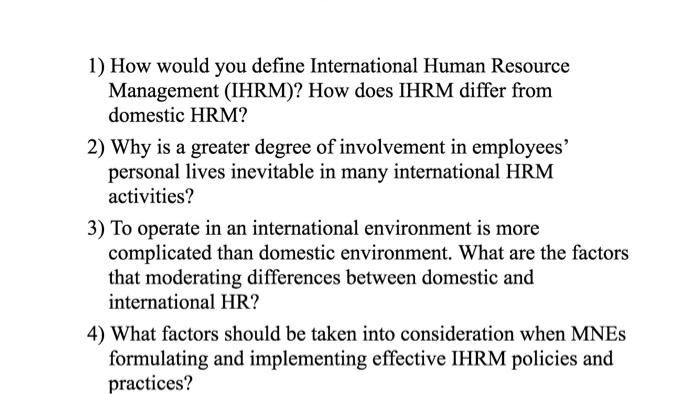

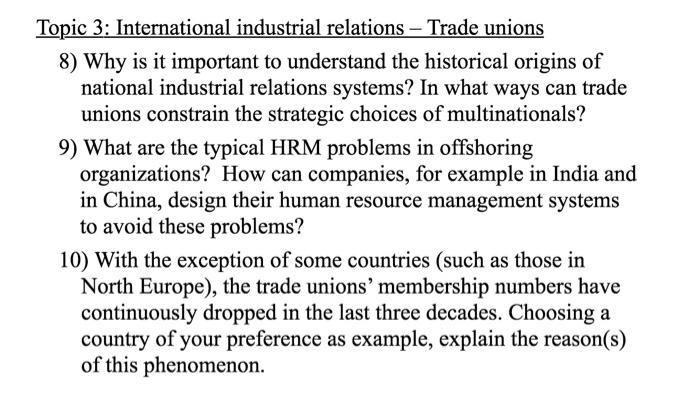
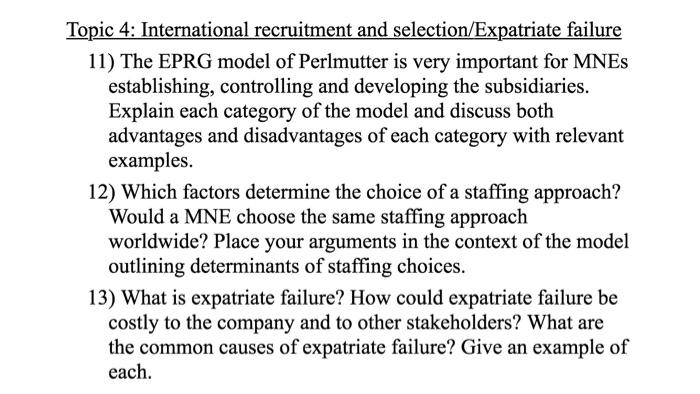

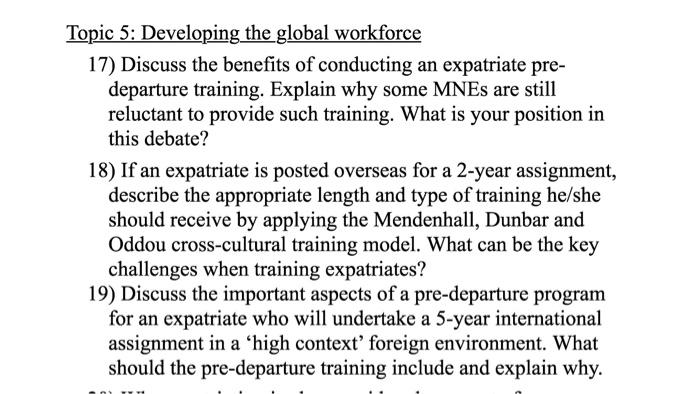
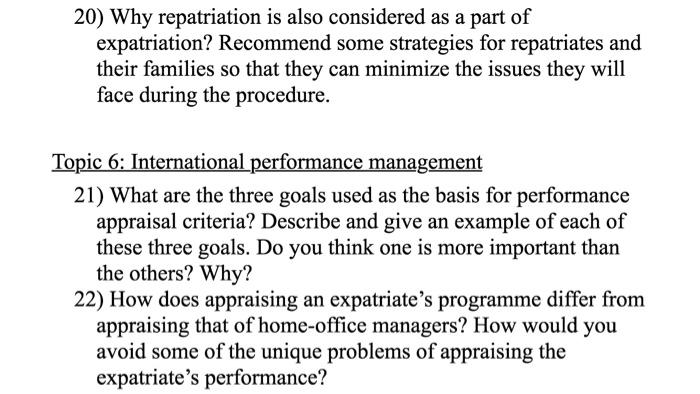
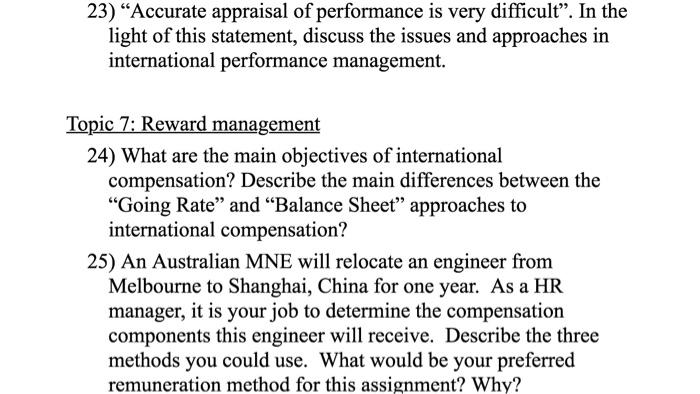
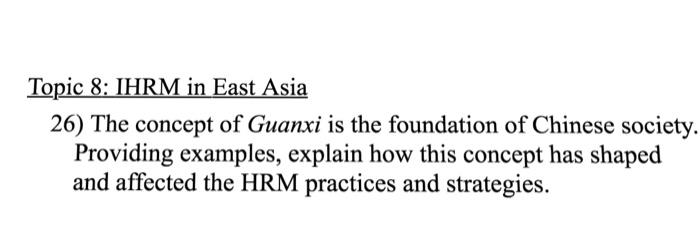
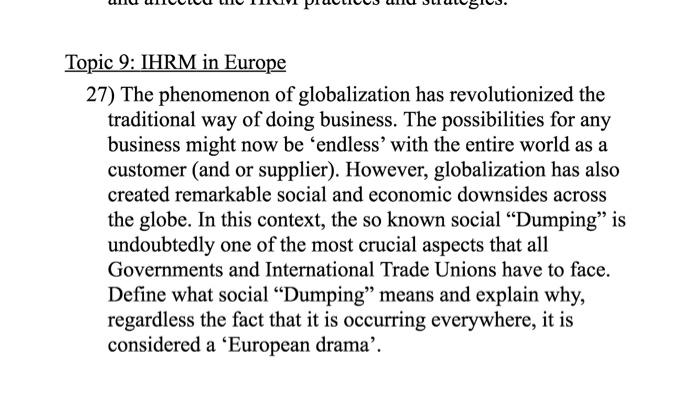
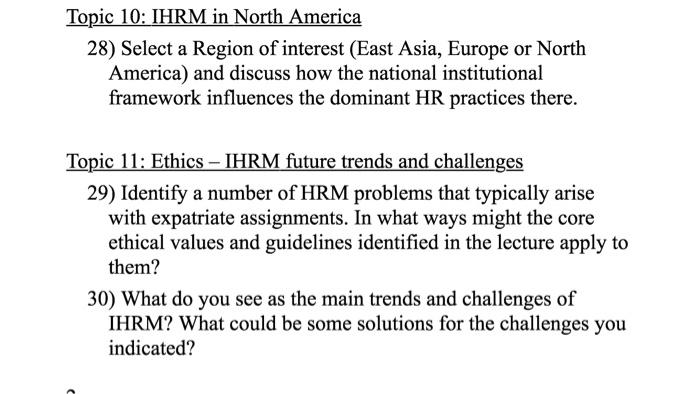
1) How would you define International Human Resource Management (IHRM)? How does IHRM differ from domestic HRM? 2) Why is a greater degree of involvement in employees' personal lives inevitable in many international HRM activities? 3) To operate in an international environment is more complicated than domestic environment. What are the factors that moderating differences between domestic and international HR? 4) What factors should be taken into consideration when MNES formulating and implementing effective IHRM policies and practices? Topic 2: Cultural and organizational context - Standardization vs. Localization 5) Explain why MNEs might want to standardize work practices. Name, describe and give an example of each factor that influences the standardization of work practices. 6) Explain why MNEs might want to localize their practices. What are the country-of-origin effect and the host-country effect? How does institutional context impact on HRM practices? 7) Using three of the Hofstede's national cultural dimensions, explain in what ways national culture is linked to, and affects, HRM practices. Topic 3: International industrial relations - Trade unions 8) Why is it important to understand the historical origins of national industrial relations systems? In what ways can trade unions constrain the strategic choices of multinationals? 9) What are the typical HRM problems in offshoring organizations? How can companies, for example in India and in China, design their human resource management systems to avoid these problems? 10) With the exception of some countries (such as those in North Europe), the trade unions' membership numbers have continuously dropped in the last three decades. Choosing a country of your preference as example, explain the reason(s) of this phenomenon. Topic 4: International recruitment and selection/Expatriate failure 11) The EPRG model of Perlmutter is very important for MNES establishing, controlling and developing the subsidiaries. Explain each category of the model and discuss both advantages and disadvantages of each category with relevant examples. 12) Which factors determine the choice of a staffing approach? Would a MNE choose the same staffing approach worldwide? Place your arguments in the context of the model outlining determinants of staffing choices. 13) What is expatriate failure? How could expatriate failure be costly to the company and to other stakeholders? What are the common causes of expatriate failure? Give an example of each. 14) The use of expatriates is increasing due to the increased globalisation; therefore, they are essential to global international business. What are the six roles of expatriates? Which of these functions extend the control of the headquarters? 15) It is not an easy task for MNEs selecting the right candidates for international assignments. What are the key selection criteria need to be considered when selecting potential candidates? Examples should be provided to support your discussion. 16) What are the major differences between male and female expatriates? How these differences affect the likelihood of failure? Topic 5: Developing the global workforce 17) Discuss the benefits of conducting an expatriate pre- departure training. Explain why some MNEs are still reluctant to provide such training. What is your position in this debate? 18) If an expatriate is posted overseas for a 2-year assignment, describe the appropriate length and type of training he/she should receive by applying the Mendenhall, Dunbar and Oddou cross-cultural training model. What can be the key challenges when training expatriates? 19) Discuss the important aspects of a pre-departure program for an expatriate who will undertake a 5-year international assignment in a 'high context' foreign environment. What should the pre-departure training include and explain why. 10) 20) Why repatriation is also considered as a part of expatriation? Recommend some strategies for repatriates and their families so that they can minimize the issues they will face during the procedure. Topic 6: International performance management 21) What are the three goals used as the basis for performance appraisal criteria? Describe and give an example of each of these three goals. Do you think one is more important than the others? Why? 22) How does appraising an expatriate's programme differ from appraising that of home-office managers? How would you avoid some of the unique problems of appraising the expatriate's performance? 23) "Accurate appraisal of performance is very difficult". In the light of this statement, discuss the issues and approaches in international performance management. Topic 7: Reward management 24) What are the main objectives of international compensation? Describe the main differences between the "Going Rate" and "Balance Sheet" approaches to international compensation? 25) An Australian MNE will relocate an engineer from Melbourne to Shanghai, China for one year. As a HR manager, it is your job to determine the compensation components this engineer will receive. Describe the three methods you could use. What would be your preferred remuneration method for this assignment? Why? Topic 8: IHRM in East Asia 26) The concept of Guanxi is the foundation of Chinese society. Providing examples, explain how this concept has shaped and affected the HRM practices and strategies. Topic 9: IHRM in Europe 27) The phenomenon of globalization has revolutionized the traditional way of doing business. The possibilities for any business might now be 'endless' with the entire world as a customer (and or supplier). However, globalization has also created remarkable social and economic downsides across the globe. In this context, the so known social "Dumping" is undoubtedly one of the most crucial aspects that all Governments and International Trade Unions have to face. Define what social "Dumping" means and explain why, regardless the fact that it is occurring everywhere, it is considered a 'European drama'. Topic 10: IHRM in North America 28) Select a Region of interest (East Asia, Europe or North America) and discuss how the national institutional framework influences the dominant HR practices there. Topic 11: Ethics - IHRM future trends and challenges 29) Identify a number of HRM problems that typically arise with expatriate assignments. In what ways might the core ethical values and guidelines identified in the lecture apply to them? 30) What do you see as the main trends and challenges of IHRM? What could be some solutions for the challenges you indicated?
Step by Step Solution
★★★★★
3.44 Rating (170 Votes )
There are 3 Steps involved in it
Step: 1
International Human Resource Management IHRM is the process of managing people in a global context I...
Get Instant Access to Expert-Tailored Solutions
See step-by-step solutions with expert insights and AI powered tools for academic success
Step: 2

Step: 3

Ace Your Homework with AI
Get the answers you need in no time with our AI-driven, step-by-step assistance
Get Started


